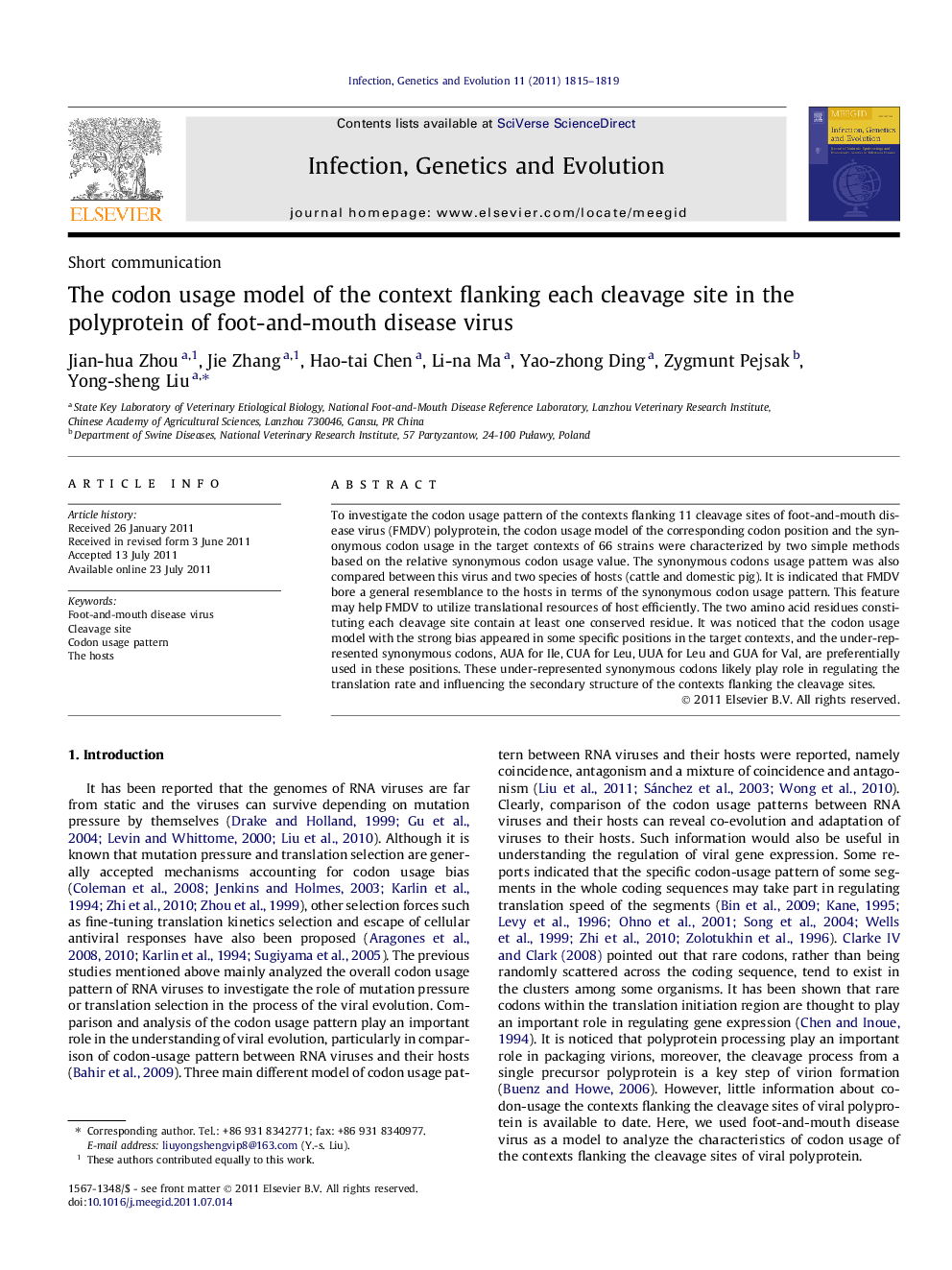| Article ID | Journal | Published Year | Pages | File Type |
|---|---|---|---|---|
| 5911609 | Infection, Genetics and Evolution | 2011 | 5 Pages |
To investigate the codon usage pattern of the contexts flanking 11 cleavage sites of foot-and-mouth disease virus (FMDV) polyprotein, the codon usage model of the corresponding codon position and the synonymous codon usage in the target contexts of 66 strains were characterized by two simple methods based on the relative synonymous codon usage value. The synonymous codons usage pattern was also compared between this virus and two species of hosts (cattle and domestic pig). It is indicated that FMDV bore a general resemblance to the hosts in terms of the synonymous codon usage pattern. This feature may help FMDV to utilize translational resources of host efficiently. The two amino acid residues constituting each cleavage site contain at least one conserved residue. It was noticed that the codon usage model with the strong bias appeared in some specific positions in the target contexts, and the under-represented synonymous codons, AUA for Ile, CUA for Leu, UUA for Leu and GUA for Val, are preferentially used in these positions. These under-represented synonymous codons likely play role in regulating the translation rate and influencing the secondary structure of the contexts flanking the cleavage sites.
⺠We investigate the codon usage of the contexts flanking 11 cleavage sites of foot-and-mouth disease virus (FMDV) polyprotein. ⺠FMDV bore a general resemblance to the hosts in terms of the synonymous codon usage pattern. ⺠The two amino acid residues constituting each cleavage site contain at least one conserved residue. ⺠The non-preferred synonymous codons may influence the translation of the contexts flanking the cleavage sites.
